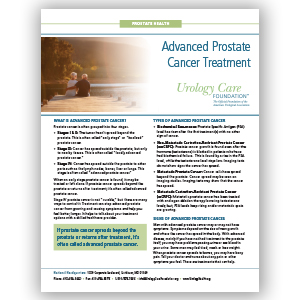Prostate Cancer
Prostate cancer is a common form of cancer that affects the prostate, a walnut-sized gland that sits near the urethra and is part of the male reproductive tract. The prostate’s primary function is to produce seminal fluid, an important component of semen. Prostate cancer occurs when abnormal cells develop in the prostate gland and form a malignant tumor.
Prostate cancer is the second most common cancer among men worldwide and the fifth leading cause of cancer-related deaths. It typically affects older men, with the majority of cases occurring in those aged 65 and over. While prostate cancer can be aggressive and spread quickly, many cases grow slowly and may not cause significant health issues. Early detection and treatment are crucial for the best outcomes and for reducing mortality rates.
Risk factors and causes of prostate cancer
The exact causes of prostate cancer are not entirely understood, but several risk factors have been identified. Some of the primary risk factors include:
- Age: The risk of developing prostate cancer increases with age, particularly after the age of 50. Approximately 60% of prostate cancer cases are diagnosed in men aged 65 and older.
- Family history: Men with a family history of prostate cancer, particularly if a close relative (e.g., father, brother) has been diagnosed, have an increased risk of developing the disease.
- Genetics: Certain gene mutations, such as BRCA1 and BRCA2, increase the risk of prostate cancer. These mutations are more commonly associated with breast and ovarian cancers in women but also play a role in prostate cancer development.
- Race/ethnicity: Prostate cancer incidence and mortality rates vary among different racial and ethnic groups. African American men have a higher risk of developing prostate cancer and are more likely to experience aggressive forms of the disease.
- Diet: A diet high in red meat, processed meat, and high-fat dairy products may increase the risk of prostate cancer. A diet rich in fruits, vegetables, and whole grains is thought to help lower the risk.
- Obesity: Obesity has been linked to a higher risk of developing aggressive prostate cancer. Maintaining a healthy weight through proper diet and exercise can help reduce the risk.
Having one or more of these risk factors does not guarantee that a man will develop prostate cancer. Knowing your risk factors can be helpful in making decisions about screening. Since several of the risk factors are lifestyle-related, addressing them can help lower overall risk.
Symptoms of prostate cancer
In its early stages, prostate cancer often presents no symptoms. As the disease progresses, some men may experience symptoms related to urinary function or sexual performance. Some common symptoms of prostate cancer include:
- Frequent urination, especially at night
- Difficulty starting or stopping urine flow
- Weak or interrupted urine flow
- Pain or burning during urination
- Blood in the urine or semen
- Painful ejaculation
- Difficulty achieving or maintaining an erection
- Pain or discomfort in the pelvic area, lower back, hips, or thighs
These symptoms can also be caused by other conditions, such as benign prostatic hyperplasia (BPH) or prostatitis. If you are experiencing any of them, it’s important to talk to your doctor, so that a proper diagnosis of what is causing the symptoms can be made.
Diagnosing and screening for prostate cancer
Early detection of prostate cancer is important for ensuring the best outcomes. Screening for prostate cancer is generally recommended for men annually beginning at the age of 50. Screening usually consists of two tests:
- Digital rectal examination (DRE): A healthcare professional inserts a gloved, lubricated finger into the rectum to feel for any abnormalities in the prostate gland, such as hard or lumpy areas.
- Prostate-specific antigen (PSA) test: This blood test measures the level of PSA, a protein produced by the prostate gland. Elevated PSA levels can indicate prostate cancer or other prostate-related conditions. It’s recommended that a man gets his first PSA test in his 40s to establish a baseline that can be compared to in the future.
If any abnormalities are found with the DRE or PSA test, further testing to determine whether or not there is prostate cancer is necessary.
Prostate biopsy: During a prostate biopsy, tissue samples are collected from the prostate. The samples are then examined under a microscope to determine if cancer cells are present.
Imaging tests: In some cases, imaging tests such as transrectal ultrasound (TRUS), magnetic resonance imaging (MRI), or computed tomography (CT) scans may be used to help visualize the prostate and identify areas of concern.
Staging and grading of prostate cancer
Once a prostate cancer diagnosis is confirmed through biopsy, the cancer is staged and graded to determine if it has spread as well as its size. The stage and grade of the cancer are important in knowing how to treat the cancer best.
Staging: Prostate cancer staging is based on the size and extent of the tumor, involvement of nearby lymph nodes, and whether it has spread outside the prostate (metastazied). Stages range from I (localized and least advanced) to IV (metastatic and most advanced).
Grading: Prostate cancer grading is determined by examining the cancer cells’ appearance under a microscope. The Gleason score, ranging from 2 to 10, is the most widely used system for grading prostate cancer. A lower Gleason score means the cancer is less aggressive with a more favorable prognosis, while a higher score suggests more aggressive cancer with a worse prognosis. The Gleason score may be combined with other factors to determine the grade group, ranging from 1 (least aggressive) to 5 (most aggressive).
Treatment options for prostate cancer
Treatment options for prostate cancer depend on various factors, including the stage and grade of the cancer, patient’s age, overall health, and personal preferences. Common treatment options include:
Active surveillance: For low-risk, slow-growing prostate cancer, active surveillance (also known as watchful waiting) may be recommended. This approach involves regular monitoring of the cancer through PSA tests, DREs, and biopsies to detect any changes in the cancer’s growth or behavior.
Surgery: A radical prostatectomy involves the surgical removal of the entire prostate gland and surrounding tissues. This option is often considered for men with localized prostate cancer and good overall health. Surgery can be performed using different techniques, including open, laparoscopic, or robot-assisted procedures.
Radiation therapy: Radiation therapy uses high-energy beams to destroy cancer cells. External beam radiation therapy (EBRT) and brachytherapy (internal radiation therapy) are the two main types of radiation therapy used to treat prostate cancer.
Treatment options for advanced prostate cancer
In cases where the prostate cancer is advanced or hasn’t responded well to surgery or radiation therapy, there are several treatment options available.
Hormone therapy: Hormone therapy, also known as androgen deprivation therapy (ADT), aims to reduce the levels of male hormones (androgens) that stimulate prostate cancer growth. This treatment can be achieved through medications or surgical removal of the testicles (orchiectomy).
Chemotherapy: Chemotherapy uses drugs to kill cancer cells and is typically used when prostate cancer has spread to other parts of the body or when hormone therapy is no longer effective.
Immunotherapy: Immunotherapy stimulates the body’s immune system to fight cancer cells. Sipuleucel-T (Provenge) is an example of a cancer vaccine approved for treating advanced prostate cancer that no longer responds to hormone therapy.
Targeted therapy: Targeted therapies are designed to attack specific abnormalities in cancer cells. Some targeted therapies, such as PARP inhibitors, are being studied for the treatment of advanced prostate cancer in patients with specific genetic mutations.
Prostate cancer prognosis and survival rates
The prognosis for men diagnosed with prostate cancer varies depending on several factors, including the stage and grade of the cancer, the individual’s overall health, and the chosen treatment plan. In general, prostate cancer has a relatively high survival rate, especially when detected and treated in its early stages.
The 5-year survival rate for men diagnosed with localized or regional prostate cancer (cancer that has not spread beyond the prostate or has only spread to nearby areas) is nearly 100%. The 10-year survival rate for these men is approximately 98%, and the 15-year survival rate is around 96%.
For men with advanced prostate cancer that has spread to distant parts of the body, the 5-year survival rate drops to about 31%. However, new advancements in treatment options have led to improvements in survival rates.
Understanding that statistics are general estimates and aren’t reliable to predict an individual’s prognosis. Each case is unique, and survival rates can vary based a number of factors and your urologist and radiation oncologist or oncologist can help you understand your individual prognosis.
Reducing the risk of prostate cancer
While it is not possible to prevent prostate cancer entirely, certain lifestyle changes and habits can help reduce the risk and promote overall health. Some strategies include:
Improving Diet: Consuming a balanced, nutritious diet rich in fruits, vegetables, whole grains, and lean protein sources may help lower the risk of prostate cancer. Foods high in antioxidants, such as tomatoes (containing lycopene), cruciferous vegetables (e.g., broccoli, cauliflower), and green tea, have been associated with a reduced risk of prostate cancer. Limiting the intake of red and processed meats, saturated fats, and high-fat dairy products may also be beneficial
Exercising: Engaging in regular physical activity has been shown to lower the risk of various types of cancer, including prostate cancer. Aim for at least 150 minutes of moderate-intensity aerobic exercise or 75 minutes of vigorous-intensity aerobic exercise per week, along with muscle-strengthening activities on two or more days per week.
Managing weight: Maintaining a healthy weight can help reduce the risk of aggressive prostate cancer. If you are overweight or obese, work with your healthcare provider to develop a weight loss plan that incorporates a balanced diet and regular exercise.
Quitting smoking: Smoking has been linked to a higher risk of prostate cancer and many other types of cancer. Quitting smoking can significantly improve your overall health and reduce your cancer risk.
Limiting alcohol consumption: Excessive alcohol consumption may increase the risk of prostate cancer. If you choose to drink alcohol, do so in moderation. Current recommendations are for men to drink no more than two drinks per day.
Getting proper screening: Regular prostate cancer screenings can help detect the disease in its early stages when treatment is most effective. Typically, prostate cancer begins annually at age 50. However, your provider may recommend a different screening schedule based on your individual risk factors and medical history.
Support and resources for patients and families
A prostate cancer diagnosis can be overwhelming, not only for the patient but also for their family and loved ones. It is essential to have access to reliable information and support networks to help navigate the challenges of dealing with prostate cancer. Some resources and avenues of support include:
- Your healthcare team: Establish a strong relationship with your healthcare team, including your primary care physician, urologist, oncologist, and other medical professionals involved in your care. They can provide valuable information about your diagnosis, treatment options, and potential side effects.
- Support groups: Connecting with others who are facing similar experiences can provide emotional support, understanding, and practical advice. Many local hospitals, cancer centers, and organizations offer support groups for prostate cancer patients and their families. Online support groups and forums can also be valuable resources for sharing experiences and advice.
- Counseling and mental health services: Living with prostate cancer can be emotionally challenging. Mental health professionals, such as therapists or counselors, can help patients and their families cope with the emotional impact of diagnosis, treatment, and recovery. Ask your healthcare team for recommendations or referrals.
- Financial assistance: The cost of cancer treatment can be a significant burden for many patients and their families, particularly for those without insurance or with limited coverage. Various organizations and programs offer financial assistance or guidance to help cover the costs of treatment, medications, and other related expenses. Your healthcare team or a social worker can recommend sources.
- Advocacy organizations: Many non-profit organizations and advocacy groups are dedicated to raising awareness, funding research, and supporting prostate cancer patients and their families. These organizations may offer various resources, including financial assistance, support networks, educational materials, and opportunities to participate in clinical trials.
By accessing support and resources, patients and their families can better navigate the complexities of prostate cancer, improve their quality of life, and find hope and encouragement throughout the treatment and recovery process.
Info Center
Prostate Health Playbook
Advanced Prostate Cancer
Treatment Fact Sheet
Prostate Cancer Patient Guide

What Is A PSA Test?
(Video)

Prostate Biopsy
(Video)

Prostate Cancer PSA
(Video)
Prostate Cancer 101
(Podcast)
Prostate Cancer Screening
(Podcast)
Prostate Health Facts
(Podcast)
More Information
Questions to Ask Your doctor
Diagnosis:
- What is my Gleason score, the grade and the stage of my cancer?
- How aggressive is this cancer? Is it likely that my cancer will spread? (Has it spread?)
- If the cancer has spread, where?
- Do I need more tests now?
- What type of schedule should I be on to track changes with this cancer?
Treatment:
- What are my treatment choices (including surveillance, localized therapy or systemic therapy)?
- What are the advantages and disadvantages of each?
- What are the time considerations and costs for each?
- What is your experience with each option?
- Would I have to go somewhere special to get treatment?
- Why do you recommend one type of therapy over another?
- What are the chances for each treatment to manage my cancer and for how long?
- What are the chances of complications from each treatment?
- What kinds of complications are likely from each?
- When are they likely to occur?
- What if I choose no treatment (watchful waiting or active surveillance)?
- How often will I need to take follow-up tests?
- If I use hormone therapy, what type do you suggest and why?
- How would we manage potential side effects from hormone therapy?
- What are the chances that my cancer will return after treatment – and if it does, what options for treatment do I have then?
- Can we develop a short and long-term plan for my care?
- Is there someone you would recommend for another opinion?
Side Effects & Recovery:
- What are the potential side effects of the treatment you recommend: both immediately and in the long term?
- How can I manage side effects?
- How would we manage potential urinary dysfunction and for how long?
- How would we manage potential erectile dysfunction and for how long?
- What other side effects should I consider?
- How much recovery time will be required after surgery?
- Will I need to take time off from work or other activities to manage treatment and treatment side effects?




